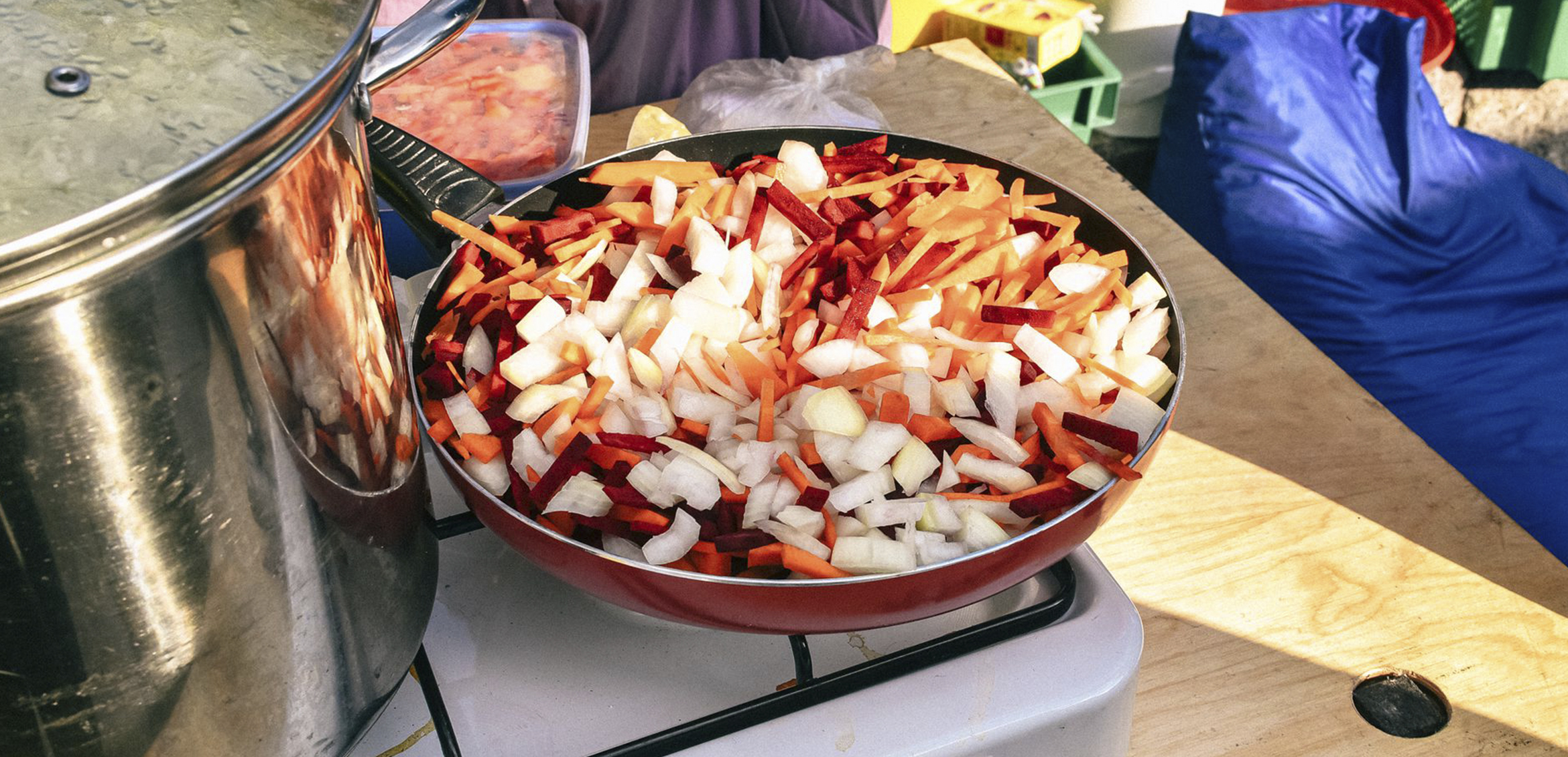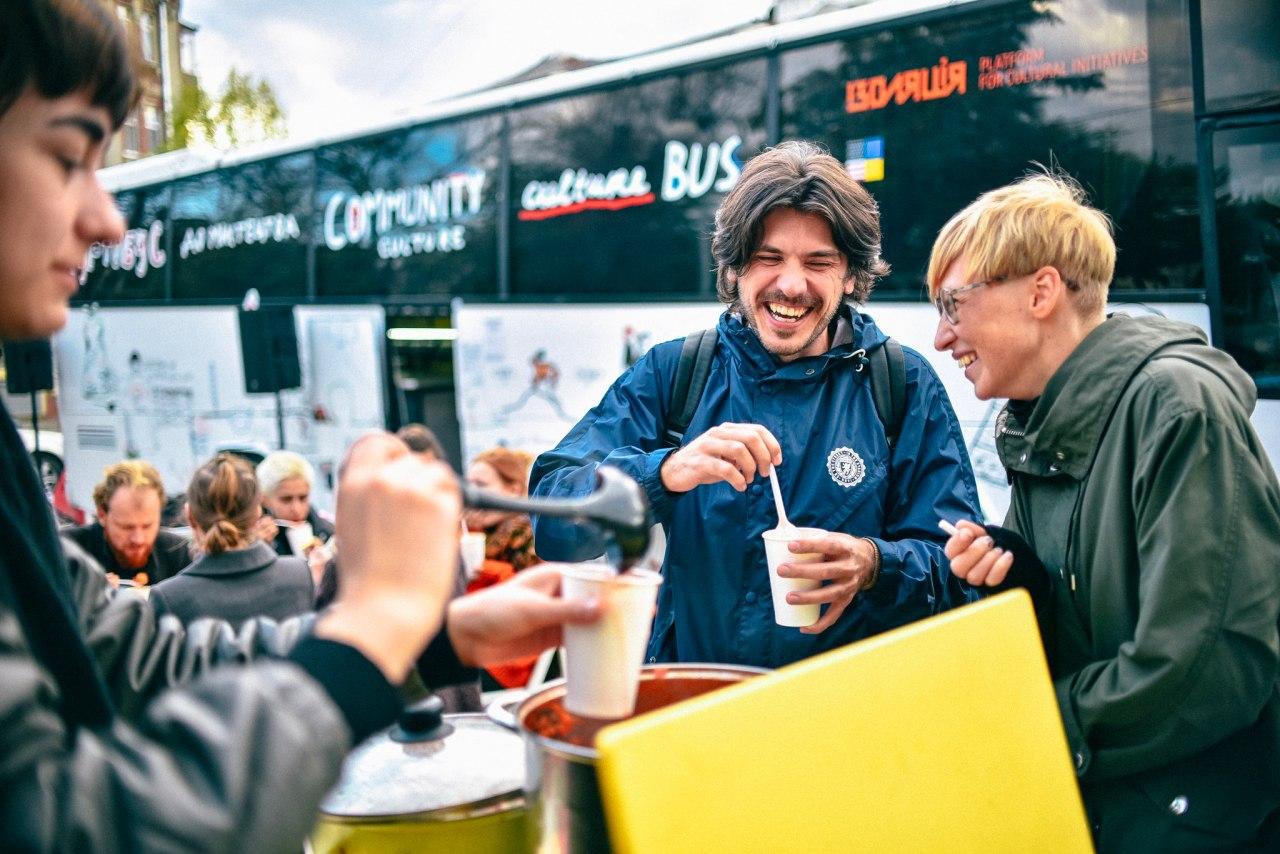BORSCHT IN ACTION PT. 5

Last summer and fall the team of the Mobile Cultural Center Gurtobus, together with renowned local chefs, cooked and sampled borscht made from local recipes in twelve towns and villages around Ukraine. The project invited visitors to workshops and film screenings and then to have a meal and to fill in questionnaires about local recipes and the culture of borscht.
As part of the Gurtobus’ interactive gastronomic study project, we are sharing a series of weekly borscht recipes from all over Ukraine! The full results of the project will be published in our forthcoming anthropological report and interactive map, and you can help by providing data for the next study cycle in our borscht survey!

In the meantime, we invite you to take part in our #BorschInAction online challenge. Each week, we feature a new recipe from the chefs of the towns and villages we visited in 2019, and you can share your own family borscht recipe with photos and the #borschtinaction hashtag on Facebook or Instagram!
This week's recipe comes from our event in Kharkiv, organized at the Kharkiv School of Architecture as a part of the Adaptive Reuse Forum.
Kharkiv borscht
(cook: Tetiana Lytvyn, Kharkiv)
The recipe makes 3 liters of borscht. Boil a soup base from salted water and either chicken or turkey on the bone. When the stock boils, remove the bird and set aside to cool. Dice 4 potatoes and toss them into the pot with the broth. Dice ¼ of a cabbage head and add it to the broth, along with one jar or can of beans preserved in tomato sauce. Slightly singe a bay leaf and add to the broth.
Next, prepare zasmazhka* using one grated carrot, one grated beet, and one chopped onion, sautéed together. When the ingredients are slightly browned, add tomato paste and chopped garlic and stew until all ingredients are cooked. At this time the chicken or turkey should be cooled enough to pick the meat from the bones and add it to the pan together with the zasmazhka*. Add salt and spices to taste — I usually use basil, pepper, cumin. Keep the borscht on low heat for another 5 minutes.
Serve the borscht with sour cream and garnish with leafy herbs (typically parsley and dill).
For the Gurtobus event, I cooked a vegetarian version of this recipe. Apart from eliminating the chicken from the ingredients, the recipe remains the same (one of our project managers who is vegetarian was finally able to taste the borsch from this project in Kharkiv! The only other vegetarian borscht we encountered was cooked in Buchach — Ed.).
Thanks again to our local partners Kharkiv School of Architecture for their help in organizing the Gurtobus events and especially to chef Tetyana Lytvyn!
*Zasmazhka is a Ukrainian word without a direct English equivalent, meaning pan sautéd vegetables used for soup base.